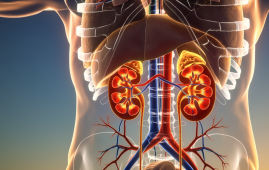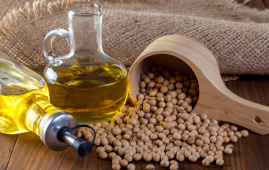

Ketamine is effective for treating depression, however, it can create dissociative symptoms such as feeling out of body or emotionally numb.
Researchers at Massachusetts General Hospital (MGH) recently discovered how ketamine interacts with distinct brain circuits to create its antidepressant and dissociative effects.
The study, which was published in Nature Communications, could lead to new depression treatments with fewer adverse effects.
The study included ten epileptic patients who had electrode implants in their brains to detect aberrant electrical activity that produces seizures. Before undergoing general anesthesia for electrode removal surgery, the patients were given ketamine.
They collected data on individuals’ brain activity before and after ketamine administration before removing the electrode implants.
The electrode recordings demonstrated that it produces its antidepressant and dissociative effects by engaging separate neural circuits in discrete frequency-dependent patterns of brain activity.
Ketamine caused “gamma oscillations” (25 to 55 Hz) in depression-related brain regions, notably the prefrontal cortex and hippocampus. It caused a 3 Hz oscillation in the posteromedial cortex, which is associated with dissociative symptoms.
“In this study, we show, for the first time to our knowledge in humans, a detailed description of the principal oscillatory changes in a variety of cortical and subcortical structures after administration of a subanesthetic dose of ketamine,” says lead author Fangyun Tian, Ph.D., an Instructor in the Department of Anesthesia, Critical Care and Pain Medicine at MGH and an Instructor in Anesthesia at Harvard Medical School.
more recommended stories
 Urine-Based microRNA Aging Clock Predicts Biological Age
Urine-Based microRNA Aging Clock Predicts Biological AgeKey Takeaways (Quick Summary) Researchers developed.
 Circadian Control of Neutrophils in Myocardial Infarction
Circadian Control of Neutrophils in Myocardial InfarctionKey Takeaways for HCPs Neutrophil activity.
 E-Cigarette Use and Heart Attack Risk in Former Smokers
E-Cigarette Use and Heart Attack Risk in Former SmokersKey Takeaways for Clinicians and Nurses.
 36-Week Pre-eclampsia Screening May Reduce Term Risk
36-Week Pre-eclampsia Screening May Reduce Term RiskA New Preventive Strategy for Term.
 Cardiovascular Risk and Sudden Cardiac Death in Diabetes
Cardiovascular Risk and Sudden Cardiac Death in DiabetesRising Sudden Cardiac Death (SCD) Risk.
 Poor Kidney Function and Alzheimer’s Biomarkers Explained
Poor Kidney Function and Alzheimer’s Biomarkers ExplainedPoor kidney function may influence levels.
 Walking Speed Before Hip Replacement Predicts Recovery
Walking Speed Before Hip Replacement Predicts RecoveryNew Evidence Points to a Simple,.
 Neuroblastoma Drug Combo Extends Survival in Models
Neuroblastoma Drug Combo Extends Survival in ModelsA Promising Shift in High-Risk Neuroblastoma.
 How Soybean Oil Impacts Weight Gain and Metabolism
How Soybean Oil Impacts Weight Gain and MetabolismWhy Soybean Oil May Affect Metabolism.
 Coffee and Cognitive Function: Evidence Review
Coffee and Cognitive Function: Evidence ReviewA new narrative review in Cureus.

Leave a Comment